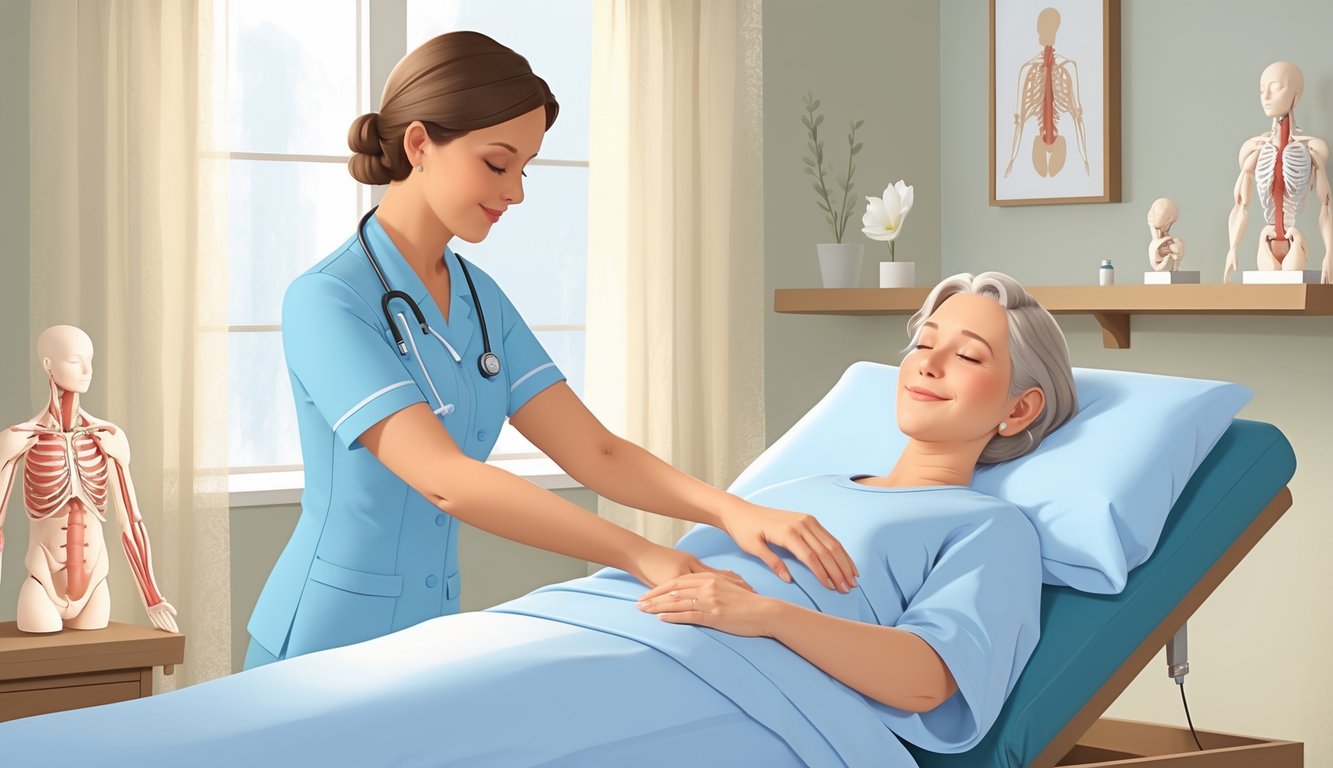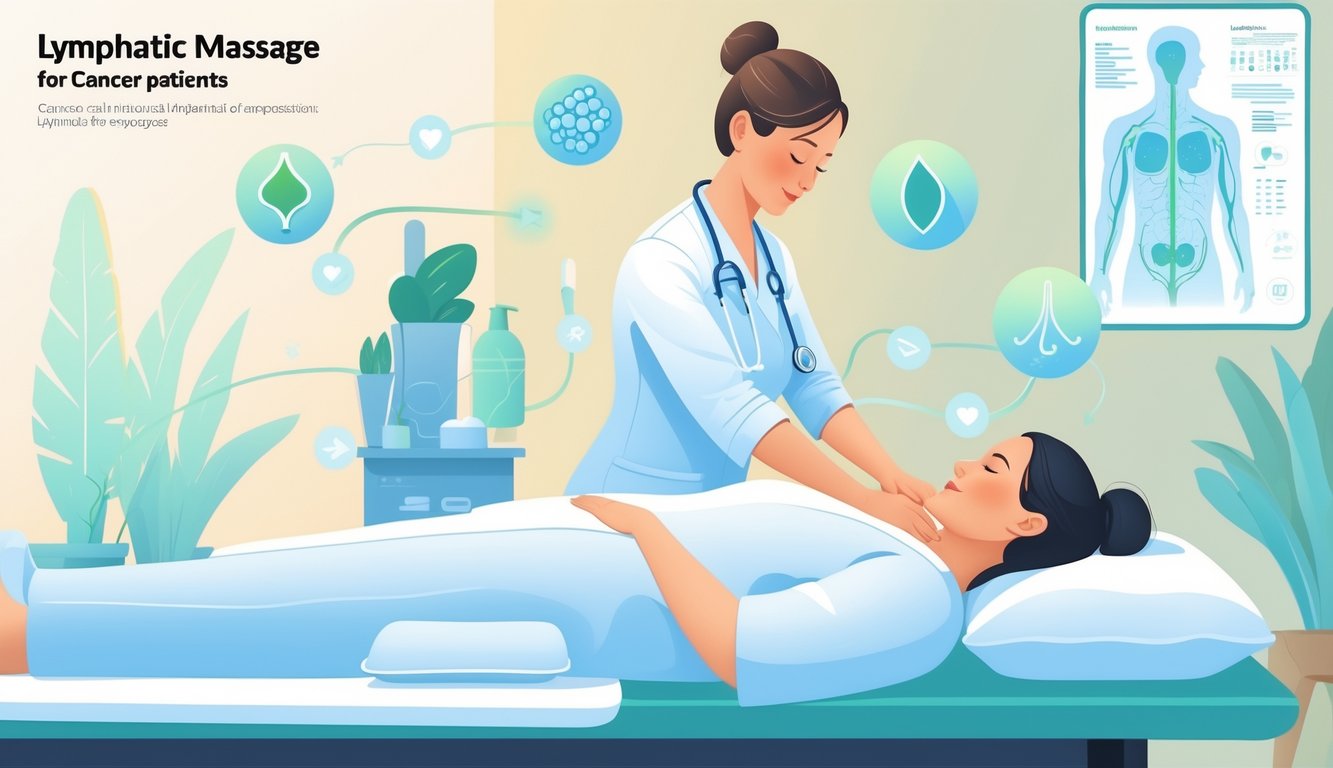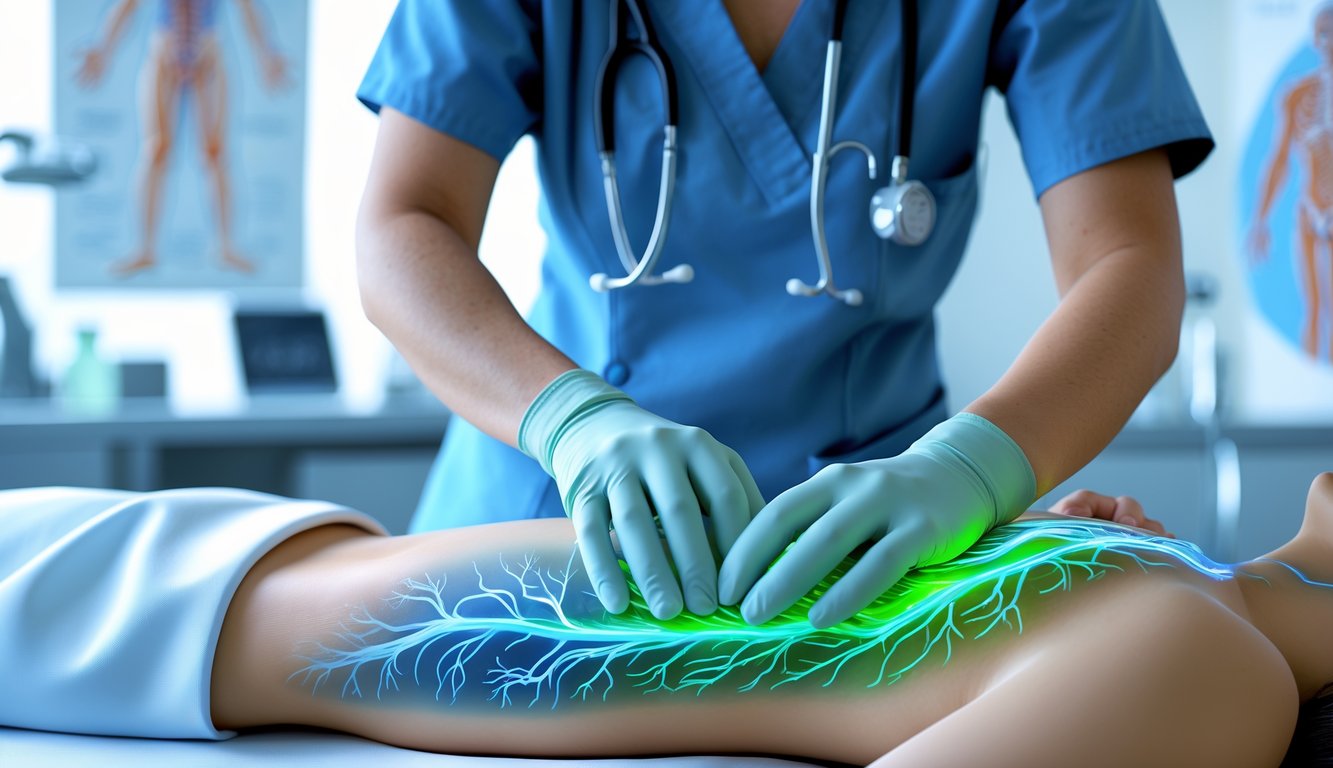Align Your Life with Your True North
The Power Quadrant System decodes your natural talents and pinpoints the career, timing and relationships that let you earn more, love deeper, and wake up eager for the day.
- Uncover your #1 high-income strength
- Draw in partners who raise your energy
- Work when your body’s clock is in “flow”
If you’re facing cancer or its treatments, you might be curious if lymphatic massage could help. Lymphatic massage uses gentle touch to guide lymph fluid along, which might ease swelling and give your body a little boost as it heals. This is especially useful if you have lymphedema, a common side effect after cancer treatment where lymph fluid builds up and causes swelling in your arms or legs.
Maybe you’re worried about whether lymphatic massage could cause problems.
Research shows it’s safe when professionals trained in cancer care do it.
This massage won’t spread cancer, but it can help you feel more comfortable and improve your quality of life during treatment.
Getting a sense of how lymphatic massage works might help you decide if it’s for you.
It’s a simple, gentle way to support your body while you deal with cancer.
Lymphatic Massage for Cancer Patients

Lymphatic massage gets lymph moving better through your system.
It can reduce swelling and help lymph nodes work, especially if cancer or its treatment has slowed things down.
You’ll find out how the massage works, what to watch out for, and which main techniques therapists use.
How Lymphatic Massage Works
Therapists use light, soft strokes to move lymph fluid through your vessels.
This helps your body clear out waste and toxins.
If you have cancer-related lymphedema, swelling happens when lymph builds up after nodes get damaged or removed.
The massage helps move that fluid to healthier areas.
The main aim is to shrink swelling, ease discomfort, and give your immune system a hand.
Decode Your Personal Success Blueprint
Power Quadrant System shows you the exact career, relationships, and daily rhythm that match your natural DNA—so you earn more, work happier, and connect deeper.
- Pinpoint your #1 money-making talent
- Erase conflict & attract ideal partners
- Multiply productivity with perfect timing
Therapists focus on certain lymph nodes to open up drainage paths.
Safety and Precautions for Cancer Patients
Before you try lymphatic massage, talk with your doctor or therapist.
This is especially important if your cancer is active or spreading.
Skip massage on spots with infections, open wounds, or skin problems.
If you feel pain or something weird during the massage, stop right away.
If you have lymphedema, make sure a trained professional does the massage carefully so swelling doesn’t get worse.
Lymphatic massage isn’t a replacement for medical treatment, but it can fit into your overall care plan.
Manual Lymphatic Drainage Techniques
Manual lymphatic drainage (MLD) is the main method therapists use with cancer patients.
MLD uses slow, gentle strokes that follow the path of lymph flow toward the nodes.
Tap Into Your Built-In Success GPS
The Power Quadrant System deciphers your genetic blueprint so you can lock onto the career, income and relationships that feel effortless—and wildly rewarding.
- Zero in on your natural high-earning genius
- Sync with partners who boost your vibe
- Wake up driven, finish days fulfilled
This clears blockages and helps fluid move more freely.
Therapists usually start near healthy lymph nodes to open up drainage first.
Then they focus on swollen or affected spots.
You might get tips on self-massage for home care, which helps keep up the results between visits.
MLD often goes hand-in-hand with other treatments like compression sleeves or simple exercises to help manage lymphedema.
Benefits and Considerations of Lymphatic Massage During Cancer Care

Lymphatic massage can help with some of the physical problems that come up during cancer treatment.
It aims to improve lymph flow, which might reduce swelling, help you relax, and support healing after surgery or chemo.
Managing Lymphedema and Swelling
If you’ve had surgery or radiation near your lymph nodes, you might notice swelling in your arms or legs.
Lymphatic massage uses gentle, steady strokes to get lymph moving and help with drainage.
This can make swelling go down and make it easier to move around.
Therapists often pair this with things like compression bandaging.
It’s important that a trained pro does the massage and avoids any spots where cancer could be active.
Supporting Relaxation and Fatigue Relief
Cancer treatments like chemo can leave you tired and stressed.
Lymphatic massage, with its light touch, can help you relax.
Some people say it eases anxiety and helps them sleep better.
It’s a gentle break from the tough parts of treatment.
Always talk to your care team before starting massage therapy to make sure it’s safe for you.
Impacts on Scar Tissue and Mobility
After surgery or radiation, you might find scar tissue makes it harder to move.
Lymphatic massage can soften that tissue and loosen things up.
This can help you move better and feel less tight.
In cases like melanoma or breast cancer surgeries, gentle massage can help rebuild lymph flow and ease stiffness near scars.
It’s a small step toward getting back some function in those areas.
Frequently Asked Questions

Lymphatic massage might help with swelling, tiredness, and comfort during cancer treatment.
You probably have questions about its benefits, risks, and how to use it safely.
Picking the right therapist and knowing who should skip it also matters.
What are the benefits of lymphatic massage for cancer patients?
Lymphatic massage can shrink swelling from cancer or its treatments.
It may help your immune system by improving lymph flow.
Many people feel it eases pain and tiredness.
Are there any risks associated with lymphatic massage for individuals with cancer?
There are some risks if your cancer is active and spreading in your lymph nodes.
If done wrong, massage could move cancer cells or irritate tissues.
Always check with your doctor before starting lymphatic massage.
How can one perform self-massage to aid lymphatic drainage when having cancer?
Use gentle, light pressure for self-massage.
Move slowly toward lymph nodes, like in your armpits or neck.
Don’t use deep or hard pressure, and stop if it hurts or feels odd.
What should one look for when searching for a lymphatic drainage therapist suitable for cancer patients?
Find therapists trained in oncology massage or manual lymphatic drainage for people with cancer.
They should know the risks and your medical background.
A good therapist listens and adjusts the treatment for you.
Is manual lymphatic drainage helpful in managing cancer-related lymphedema?
Manual lymphatic drainage can work well for lymphedema from cancer treatment.
It helps move extra fluid from swollen areas to healthy lymph nodes.
Lots of patients feel more comfortable and see less swelling.
Who is advised to avoid lymphatic drainage massage, especially in the context of cancer?
If you’re dealing with an active infection, blood clots, or untreated cancer in your lymph nodes, it’s best to skip lymphatic massage.
This type of massage can make those problems worse.
Talk to your healthcare provider before you try any massage therapy.
They’ll know what’s safest for your situation.



